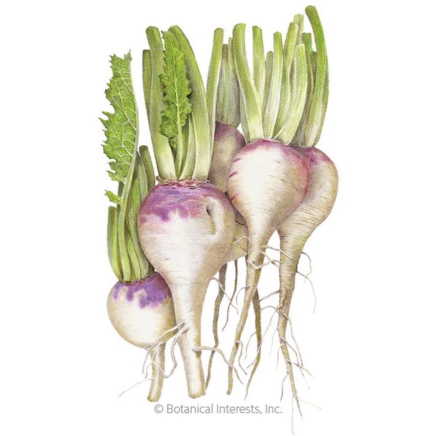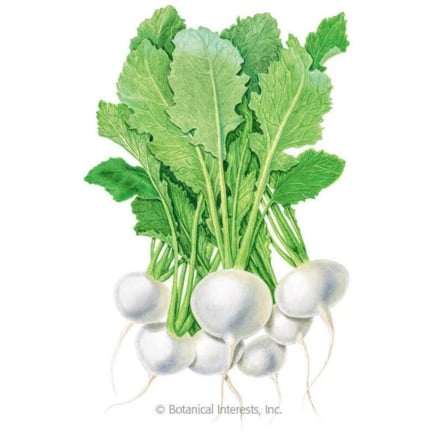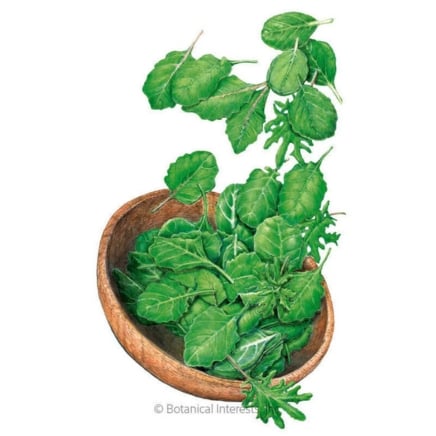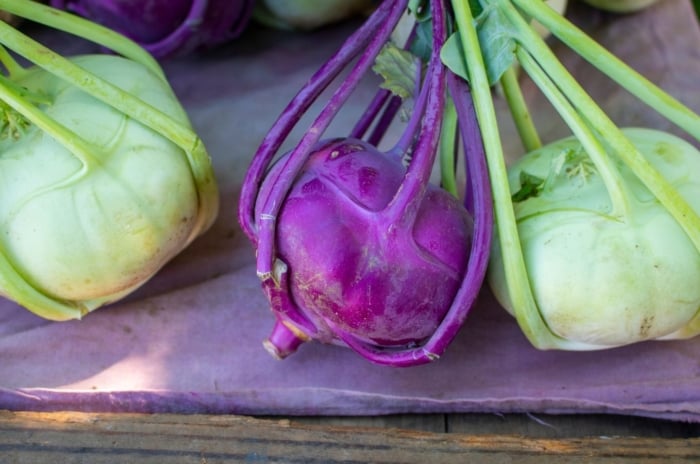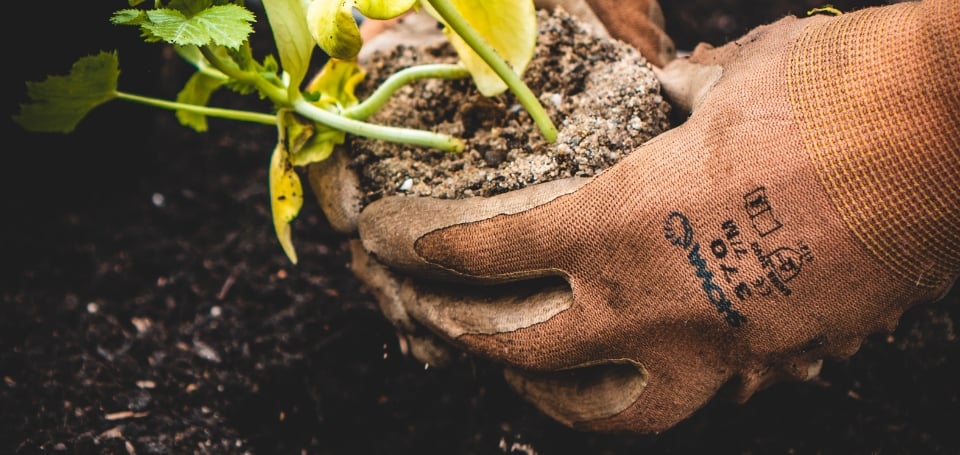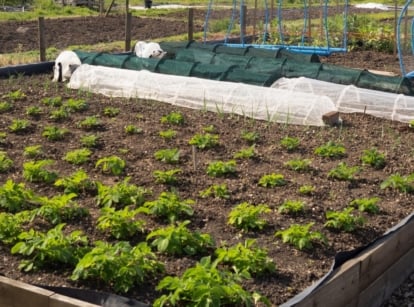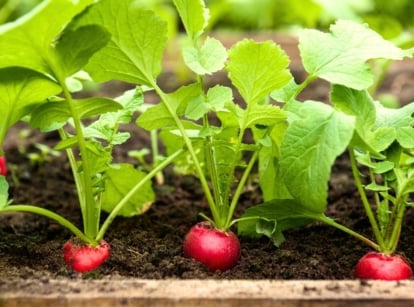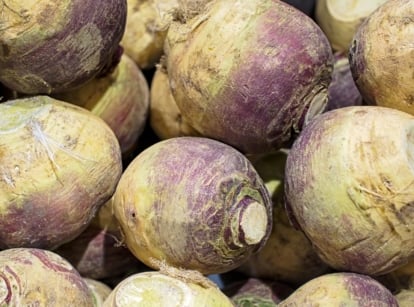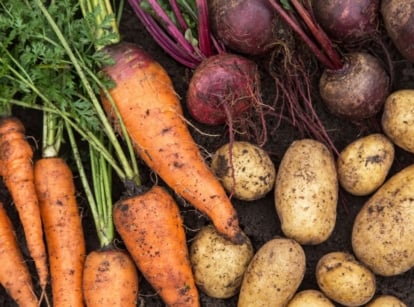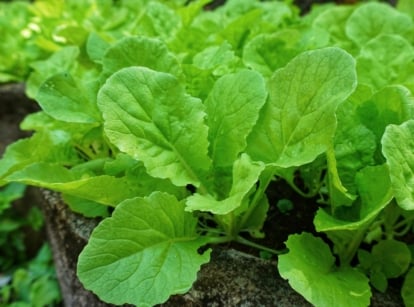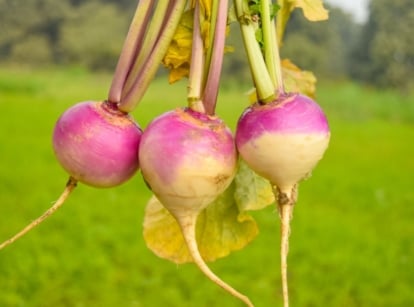11 Turnip Varieties to Plant in Late Summer
The time to garden is not over! Late summer is a perfect season to start fall crops, and turnips are one of the best fall crops there is. They’re easy to grow, delicious to eat, and they have a wide range of uses in the kitchen. Try one of these 11 unique turnip varieties, as recommended by gardening expert Jerad Bryant.

Contents
Turnips don’t get as much love as they should. Ask any of your friends how many turnips they eat, and most will say none! These root crops sit in the shadows of our other favorites like carrots, beets, and radishes.
Instead of casting turnips aside, fill your late summer and fall garden with these tasty roots. They grow well with less care than carrots, and they mature in about the same amount of time as beets. You can successively sow turnip seeds for continuous harvests throughout the year.
If you’re still on the fence about turnips, consider their incredible variety! Some are crisp and sweet, tasting great fresh in salads or fermented in pickling recipes. Others are hearty and mellow, perfect for roasting, boiling, or sautéing in cooked dishes.
Regardless of your cooking and taste preferences, there are options here for you. Try two or three turnips and pick your favorite, or opt for a go-to variety!
Golden Ball

‘Golden Ball’ has flesh that resembles the interior of rutabagas. It’s golden yellow, creamy, and delicious. Gardeners report a mild, mellow flavor with a soft texture.
‘Golden Ball’ roots reach between three and four inches across when full-grown. Harvest them at this size, as overgrown turnips tend to turn stringy and woody. You may also pick the young foliage; the leafy greens work well cooked or steamed like spinach.
This late summer turnip variety needs 45 to 65 days to mature after germination. Sow them up to a month and a half before your first average frost date in the fall.
Purple Top White Globe

‘Purple Top White Globe’ is another variety that’s perfect for cooking. It’s your typical American turnip! This late summer turnip is an heirloom cultivar that growers have treasured for decades. Cultivate it in your garden to partake in the longstanding tradition of turnip growing.
As its name suggests, ‘Purple Top White Globe’ sprouts globe-shaped roots with purple tops and white bottoms. The flesh inside is white, and it tastes savory, hearty, and rich.
Unlike other root crops, turnips don’t store well after picking. Eat them shortly after harvesting, and store them in the garden until you’re ready to use them.
Royal Crown

‘Royal Crown’ is the last of the hearty turnips we’ll cover here. This variety stands out from the previous two for its unique shape and short maturing period. The roots look like ‘Purple Top White Globe’ except they’re flattened and squat, resembling a crown.
‘Royal Crown’ turnips need 50 to 55 days to mature after planting. Give them full sun, regular water, and a dose or two of organic fertilizer. Control weeds while the seedlings sprout in late summer, as they’ll crowd out the turnips and smother them before they can flourish.
Hakurei

Japanese ‘Hakurei’ turnips differ from the previous late summer turnip varieties. They’re one of the best candidates for fresh eating. The roots swell quickly into two-inch globes with creamy all-white skin, and they only need about 38 to 46 days to grow from seedlings into mature crops.
There are many ways to use ‘Hakurei’ roots. Grate them fresh on salads, sauté them in stir fry, or pickle them in vinegar. Your imagination is the limit!
You may also treat these sweet turnips like the previous varieties and cook them in prepared meals. Roast, boil, or pan-fry them to draw out their flavor.
Hirosaki Red

‘Hirosaki Red’ differs from purple and white late summer turnip varieties. It features bright red skin, white flesh, and green leaves with red stems. You may confuse it for a red radish. This cultivar is exceptional as an ornamental plant or as a crop in the vegetable garden.
‘Hirosaki Red’ has a subtly spicy flavor that lends well to salads and sandwiches. Thinly slice the roots, or grate them onto your fresh dishes. They’ll be ready quickly after planting, as they only need about 41 days to mature from a seedling into a harvestable root.
Noir Long Black

‘Noir Long Black’ is unlike any other turnip you’ve seen before! The roots are long, cylindrical, and black-skinned. Their flesh has a sweet, mild flavor that’s exceptional in fresh salads, soups, and charcuterie boards.
Instead of grating the flesh, try slicing it into thin rounds. Then, pickle the rounds in vinegar or ferment them in a salt-water brine. The pickling and fermenting processes turn the rounds into perky, crispy pieces with superb flavor and incredible texture.
‘Noir Long Black’ needs more space in the garden than other turnips. Give the plants plenty of room, and care for them while they grow. They need 50 to 55 days to mature from seedlings into full-size roots.
Oasis

‘Oasis’ is a white-fleshed, white-skinned turnip like ‘Hakurei.’ It’s a hybrid variety, meaning you can’t save its seeds. You must purchase them from garden centers, plant nurseries, or specialty seed retailers.
This hybrid stands out from heirloom late summer turnip varieties because of its unique flavor. It’s delectably sweet, tasting more like a melon than a turnip. Use it in fruit mixes, salads, and charcuterie boards.
Scarlet Queen Red Stems

‘Scarlet Queen Red Stems’ is similar to ‘Hirosaki Red.’ This cultivar features squat roots with red skin and creamy, white flesh with pink hues. The red skin is slightly spicy, similar to radishes.
Atop the red roots, green leaves grow off red stems. Their color blends well in salads and cooked greens dishes. Pick the young leaves anytime, and harvest the mature roots around 43 days after planting.
‘Scarlet Queen Red Stems’ is a tad less spicy than ‘Hirosaki Red’. Pickle or ferment the roots to draw out their subtle spice.
Tokyo Silky Sweet

‘Tokyo Silky Sweet’ resembles ‘Hakurei’ with all-white, round roots and creamy white flesh. They’re slightly more heat-tolerant than other late summer turnip varieties. Grow them in raised beds, in-ground beds, or large containers.
Although ‘Tokyo Silky Sweet’ is heat-tolerant, it grows best at the end of summer or the beginning of spring. Turnips are quick growers, and they dislike maturing during the hottest months of the year.
These roots need about 45 days to reach their full size. They’ll swell to between one and two inches wide. Grate them, slice them, or eat them whole like an apple!
White Lady

‘White Lady’ is another Japanese turnip variety that’s essential in fresh summer dishes. It sprouts white, round, and creamy roots full of flavor. Harvest them young when they’re two inches across, or let them mature to five inches wide.
‘White Lady’ needs 30 to 40 days to mature to full size. Plant seeds from late summer up to a month before your first frost date. Keep the plants cool, moist, and well-lit while they grow to ensure a successful harvest.
Seven Top

‘Seven Top’ represents a third type of turnip. It grows leafy greens instead of swollen roots. Harvest its young leaves for fresh greens, or use the mature ones for cooked dishes.
‘Seven Top’ is one of the best late summer turnip varieties for growing greens. You can snip its leaves and let them regrow for multiple rounds of harvesting. The leaves taste slightly like turnips, and they blend well with spinach, chard, or collards.
You may pull up ‘Seven Top’ roots for eating when they’re young and small, though they’re best left to grow for their foliage. The mature plants are woody and bitter, and they won’t taste as good as other turnips.

